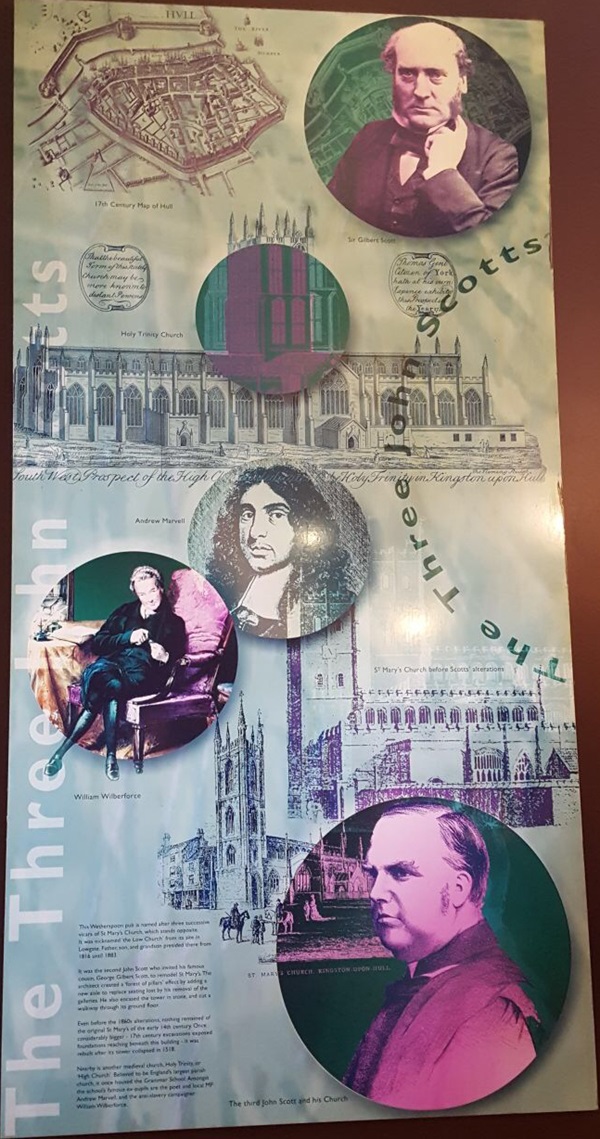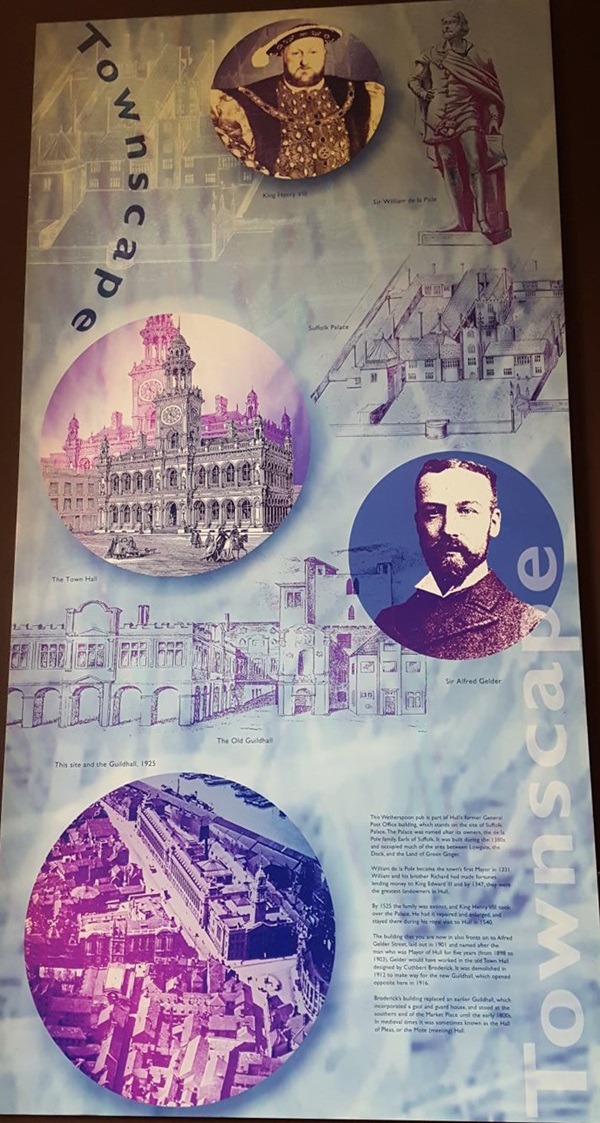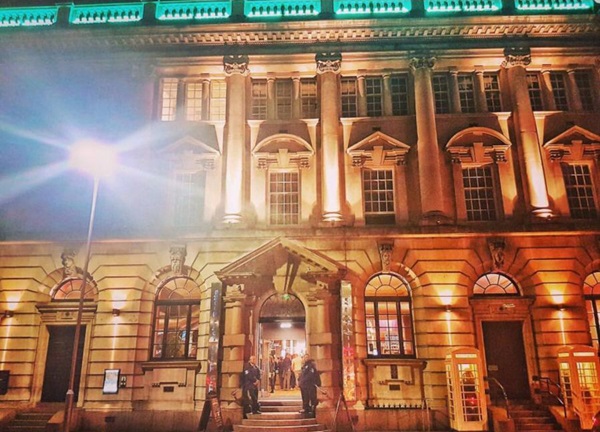For most of the 19th century, St Mary’s Church, opposite this Wetherspoon pub, was run by three successive vicars, all called John Scott.
Prints and text about The Three John Scotts.

The text reads: This Wetherspoon pub is named after three successive vicars of St Mary’s Church, which stands opposite. It was nicknamed ‘the Low Church’ from its site in Lowgate. Father, son, and grandson presided there from 1816 until 1883.
It was the second John Scott who invited his famous cousin, George Gilbert Scott, to remodel St Mary’s. The architect created a ‘forest of pillars’ effect by adding a new aisle to replace seating lost by his removal of the galleries. He also encased the tower in stone, and cut a walkway through its ground floor.
Even before the 1860s alterations, nothing remained of the original St Mary’s of the early 14th century. Once considerably bigger – 17th century excavations exposed foundations reaching beneath this building – it was rebuilt after its tower collapsed in 1518.
Nearby is another medieval church, Holy Trinity, or ‘High Church’. Believed to be England’s largest parish church, it once housed the Grammar School. Amongst the school’s famous ex-pupils are the poet and local MP Andrew Marvell, and the anti-slavery campaigner William Wilberforce.
Prints and text about the town.

The text reads: This Wetherspoon pub is part of Hull’s former General Post Office building, which stands on the site of Suffolk Palace. The Palace was named after its owners, the de la Pole family, Earls of Suffolk. It was built during the 1380s and occupied much of the area between Lowgate, the Dock, and the Land of Green Ginger.
William de la Pole became the town’s first Mayor in 1331. William and his brother Richard had made fortunes lending money to King Edward III and by 1347, they were the greatest landowners in Hull.
By 1525 the family was extinct, and King Henry VIII took over the Palace. He had it repaired and enlarged, and stayed there during his royal visit to Hull in 1540.
The building that you are now in also fronts on to Alfred Gelder Street, laid out in 1901 and named after the man who was Mayor of Hull for five years (from 1898 to 1903). Gelder would have worked in the old Town Hall designed by Cuthbert Brodrick. It was demolished in 1912 to make way for the new Guildhall, which opened opposite here in 1916.
Brodrick’s building replaced an earlier Guildhall, which incorporated a gaol and guard house, and stood at the southern end of the Market Place until the early 1800s. In medieval times it was sometimes known as the Hall of Pleas, or the Mote (meeting) Hall.
External photograph of the building – main entrance.

If you have information on the history of this pub, then we’d like you to share it with us. Please e-mail all information to: pubhistories@jdwetherspoon.co.uk